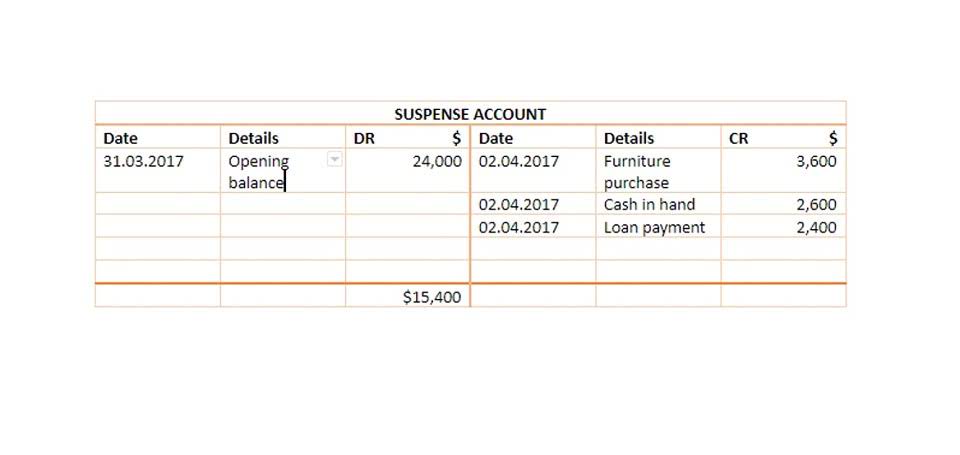
At Finance Strategists, we partner with financial experts to ensure the accuracy of our financial content. Quick assets refer to assets that can be converted to cash within one year (or retained earnings the operating cycle, whichever is longer). Our website services, content, and products are for informational purposes only. When you leave a comment on this article, please note that if approved, it will be publicly available and visible at the bottom of the article on this blog.

Q. How does the Quick Ratio differ from the Current Ratio?
Set a quick ratio benchmark that aligns with industry standards to ensure your business is well-positioned for stability and growth. what does quick ratio show Creditors use it to gauge a company’s ability to repay loans, while investors gain insights into its short-term financial stability. The benefit of lumping all debts together is it’s more accessible because people outside of the company may not have access to details like when a payment is due. On the other hand, counting only very immediate debts is ultimately more accurate but can be time-consuming and less applicable over a fiscal quarter or year.
Seasonality – Factors Causing a Company’s Quick Ratio to Fluctuate

This team of experts helps Finance Strategists maintain the highest level of accuracy and professionalism possible. The articles and research support materials available on this site are educational and are not intended to be investment or tax advice. All such information is provided solely for convenience purposes only and all users thereof should be guided accordingly. Finance Strategists has an Bookkeeping for Veterinarians advertising relationship with some of the companies included on this website. We may earn a commission when you click on a link or make a purchase through the links on our site. All of our content is based on objective analysis, and the opinions are our own.
Quick Ratio or Acid Test Ratio FAQs
- Suppliers may also use the quick ratio to assess a company’s creditworthiness, adjust payment terms or require collateral based on a company’s liquidity and financial health.
- In addition, the quick ratio is a key metric that lenders and investors use to assess a company’s creditworthiness.
- The quick ratio is a formula and financial metric determining how well a company can pay off its current debts.
- However, the current ratio includes inventory and prepaid expenses in assets because assets are defined as anything that could be liquified within a year for the current ratio.
- When the quick ratio increases, a company has more liquid assets to cover its short-term obligations.
- The quick ratio is the barometer of a company’s capability and inability to pay its current obligations.
We will also cover the differences between quick and current ratios and the limitations and common pitfalls to avoid when interpreting a company’s quick ratio. The quick ratio tells you how easily a company can meet its short-term financial obligations. A higher ratio indicates a more liquid company while a lower ratio could be a sign that the company is having liquidity issues. It measures the ability of a company to meet its short-term financial obligations with quick assets. If a company finds that its Quick Ratio is not at a desirable position, there are several strategies it can take to improve this figure. In a nutshell, the Quick Ratio is not just a measure of liquidity but a valuable tool for financial decision-making and strategic planning.
Excludes Certain Assets – Limitations of Quick Ratio
This increases the chances of the company defaulting on its debts, leading to potential financial instability—the exact opposite of what effective debt management aims to prevent. The relationship between the quick ratio and a company’s debt management is more often than not a direct one. Quick ratio is considered as a liquidity metric used to evaluate a company’s ability to pay its short-term liabilities.
Get in Touch With a Financial Advisor

For creditors, a high quick ratio can be an encouraging sign as it may indicate that their loans would be paid back timely. Investors might find a company with a high quick ratio to be more attractive as it suggests that the company manages its debts effectively. With minimal inventory, SaaS companies can rely on accounts receivable and cash reserves as primary liquid assets. Ideally, accountants and finance professionals should use multiple metrics to understand a company’s status.
- Traditionally, calculating the quick ratio was a manual process, where finance teams would pull data from various sources, including balance sheets and accounts, to gather current assets and liabilities.
- The quick ratio, instead, focuses on very short-term, highly liquid assets, keeping inventory and prepaid expenses out.
- In these industries, companies may have a large amount of inventory that can be quickly converted into cash.
- Also, if there are other businesses that may be affected in case of bankruptcy, then this could impact whether any claims would be paid back in full or just partially.
- While the quick ratio is not a perfect indicator of liquidity, it is one tool that analysts use to get a snapshot of how well a company can meet its short-term obligations.
- This can be done by negotiating better payment terms, consolidating suppliers, and taking advantage of early payment discounts.
It offers valuable insights into a company’s financial robustness and its capacity to navigate the tumultuous seas of the business world. Whether you’re an investor, a creditor, or a business owner, understanding the Quick Ratio is a fundamental skill that can help you make informed decisions. It’s referred to as the ‘Acid-Test Ratio’ because it tests a company’s ability to meet its immediate financial “acidic” obligations. If a company experiences declining profits, it may have less cash and a lower quick ratio. Some companies experience fluctuations in their quick ratio due to seasonal changes in their business operations.
Part 2: Your Current Nest Egg
For example, if a company sells off its inventory or improves its inventory management practices, it can increase its quick ratio by reducing the inventory component in the calculation. When the quick ratio increases, a company has more liquid assets to cover its short-term obligations. This is a positive sign as it indicates that the company has improved its liquidity position and is better equipped to meet its immediate financial obligations. Customers use the quick ratio to evaluate a company’s financial health and stability. By looking at a company’s quick ratio, customers can determine whether a company is likely to remain in business and continue to provide goods or services.
- It’s essential to consider industry norms and the company’s specific circumstances.
- This could mean the company cannot quickly convert its assets into cash to meet its financial obligations.
- This information is critical when making investment decisions, as companies with low quick ratios may be at a higher risk of defaulting on their debts or facing financial distress.
- Analysts can determine whether a company is in a solid financial position or facing financial challenges by looking at a company’s quick ratio.
- Because this ratio seeks to tell how well a company can pay off immediate or pressing debts, inventory isn’t a reliable source.
- The reasoning for this omission lies in the uncertainty surrounding the speed at which inventory can be converted into cash without incurring a loss.
To learn more about this ratio and other important metrics, check out CFI’s course on performing financial analysis. Someone on our team will connect you with a financial professional in our network holding the correct designation and expertise. Our writing and editorial staff are a team of experts holding advanced financial designations and have written for most major financial media publications. Our work has been directly cited by organizations including Entrepreneur, Business Insider, Investopedia, Forbes, CNBC, and many others.

